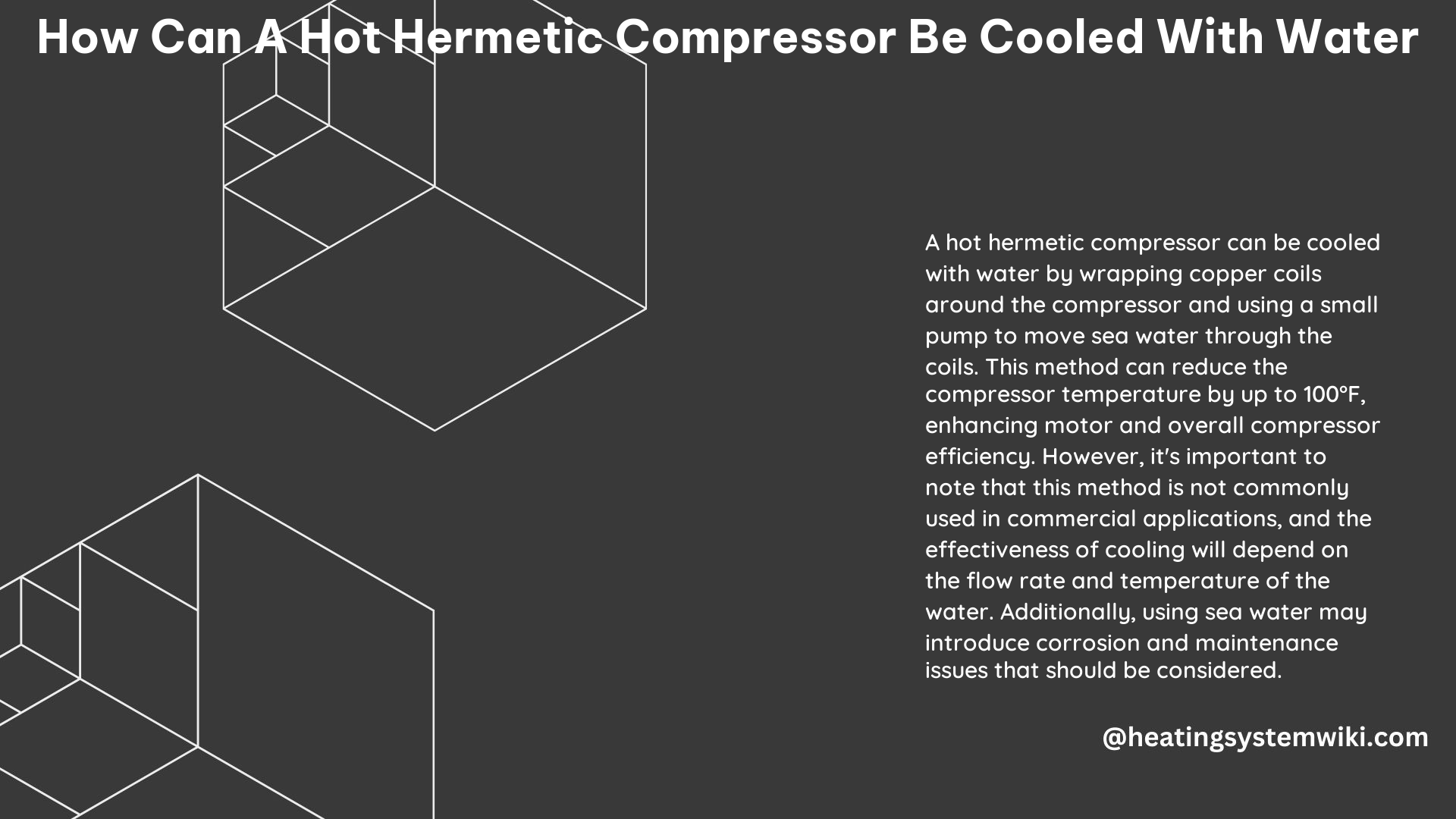Cooling a hot hermetic compressor with water is a practical and efficient solution to quickly reduce its temperature and restore its operational capabilities. This method involves spraying water directly onto the compressor’s outer casing, which absorbs the excess heat and evaporates, effectively lowering the compressor’s temperature.
Ensuring Safety
Before attempting to cool a hot hermetic compressor with water, it is crucial to prioritize safety. Follow these steps to ensure a safe and successful cooling process:
- Power Down the Unit: Disconnect the power supply to the compressor unit and lock the control panel to prevent accidental activation during the cooling process.
- Inspect Electrical Components: Thoroughly inspect the compressor’s terminals and connections to ensure there is no circuit to the ground. Check the common-to-run and common-to-start connections to verify their integrity.
- Establish a Safe Workspace: Stand on dry timber or a non-conductive surface to maintain a safe distance from any electrical components and prevent the water from coming into contact with live parts.
Cooling the Compressor with Water

Once the safety precautions are in place, you can proceed with the water-based cooling process:
- Spray Water on the Compressor Casing: Carefully spray water directly onto the outer casing of the hot hermetic compressor, ensuring that the water does not come into contact with any electrical components or wiring. The water will absorb the excess heat and evaporate, effectively cooling the compressor.
- Monitor the Cooling Process: Keep a close eye on the compressor’s temperature as it cools down. The cooling process typically takes around 30 minutes, but the duration may vary depending on the compressor’s size, the ambient temperature, and the water flow rate.
- Attach Gauges for Diagnostics: While the compressor is cooling, attach pressure and temperature gauges to the unit to identify any potential issues, such as low refrigerant levels or leaks.
Guidelines for Effective and Safe Cooling
When cooling a hot hermetic compressor with water, it is crucial to follow specific guidelines to ensure safety, efficiency, and optimal results:
- Avoid Electrical Components: Ensure that the water does not come into contact with any electrical components, wiring, or terminals to prevent damage or the risk of electrical shock.
- Maintain a Safe Distance: Stand on dry timber or a non-conductive surface to maintain a safe distance from the electrical components and avoid any potential hazards.
- Monitor Temperature Closely: Keep a close eye on the compressor’s temperature as it cools down to ensure it reaches a safe operating level. Avoid overcooling, as this can lead to condensation and potential issues.
- Adjust Water Flow as Needed: Adjust the water flow rate as necessary to maintain an optimal cooling rate. Too much water can lead to excessive cooling, while too little may not effectively dissipate the heat.
- Inspect for Potential Issues: While the compressor is cooling, carefully inspect the unit for any signs of leaks, damage, or other problems that may have contributed to the overheating.
By following these steps and guidelines, you can effectively cool down a hot hermetic compressor using water, ensuring its safe and efficient operation.
Technical Specifications and Considerations
When cooling a hot hermetic compressor with water, it is essential to consider the following technical specifications and factors:
- Compressor Size and Capacity: The size and capacity of the hermetic compressor will determine the amount of water required and the duration of the cooling process. Larger compressors will generally require more water and a longer cooling time.
- Refrigerant Type: The type of refrigerant used in the compressor can affect the cooling process. Different refrigerants have varying thermal properties, which may influence the water flow rate and cooling efficiency.
- Ambient Temperature: The ambient temperature of the surrounding environment can impact the cooling process. Higher ambient temperatures may require a higher water flow rate or longer cooling duration to effectively dissipate the excess heat.
- Water Quality: The quality of the water used for cooling can also play a role. Impurities or contaminants in the water may affect the heat transfer efficiency and potentially lead to scaling or corrosion on the compressor’s surface.
- Cooling Rate and Temperature Monitoring: Carefully monitor the compressor’s temperature during the cooling process to ensure it reaches a safe operating level, typically around 120°F (49°C) or below. Avoid overcooling, as this can lead to condensation and potential issues.
- Pressure and Refrigerant Charge: While the compressor is cooling, attach pressure and temperature gauges to the unit to assess the refrigerant charge and identify any potential leaks or other issues that may have contributed to the overheating.
By considering these technical specifications and factors, you can optimize the water-based cooling process for your hot hermetic compressor, ensuring its safe and efficient operation.
Conclusion
Cooling a hot hermetic compressor with water is a practical and effective solution that can quickly reduce the compressor’s temperature and restore its operational capabilities. By following the safety guidelines, the step-by-step cooling process, and the technical considerations outlined in this guide, you can successfully cool down a hot hermetic compressor using water, ensuring its continued reliable performance.
